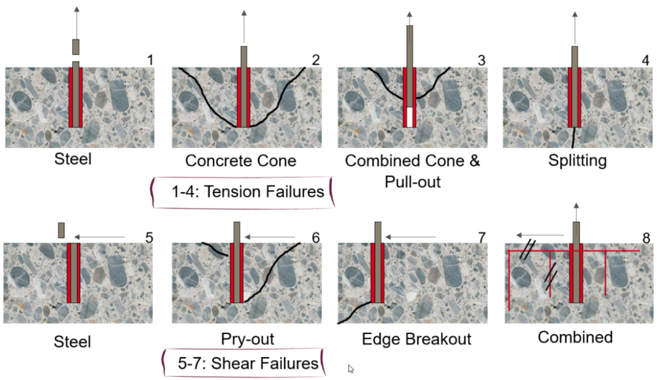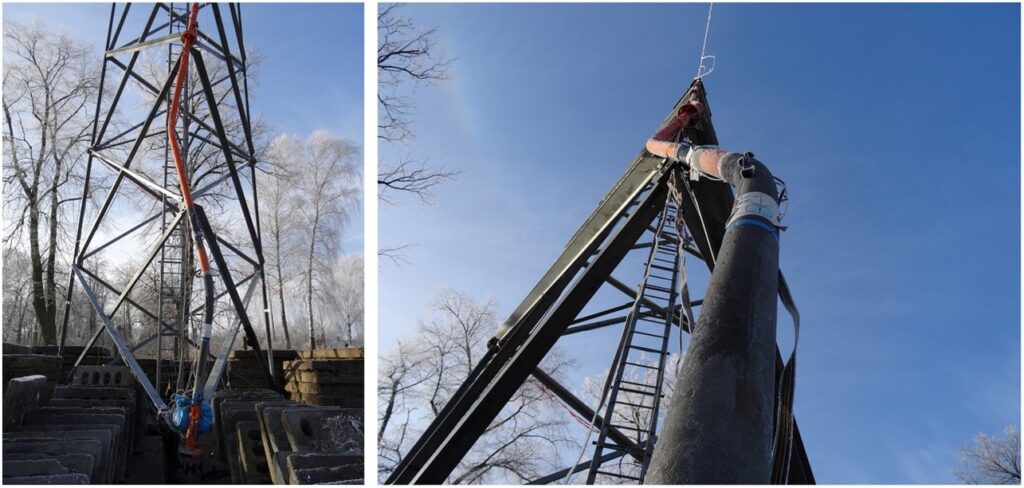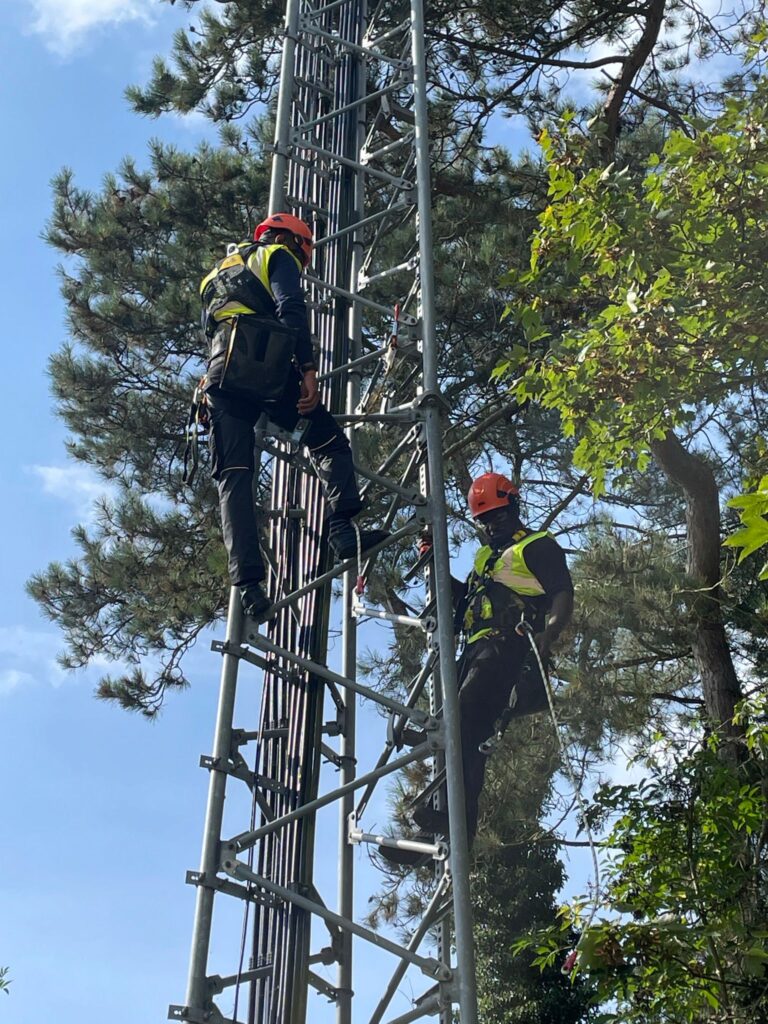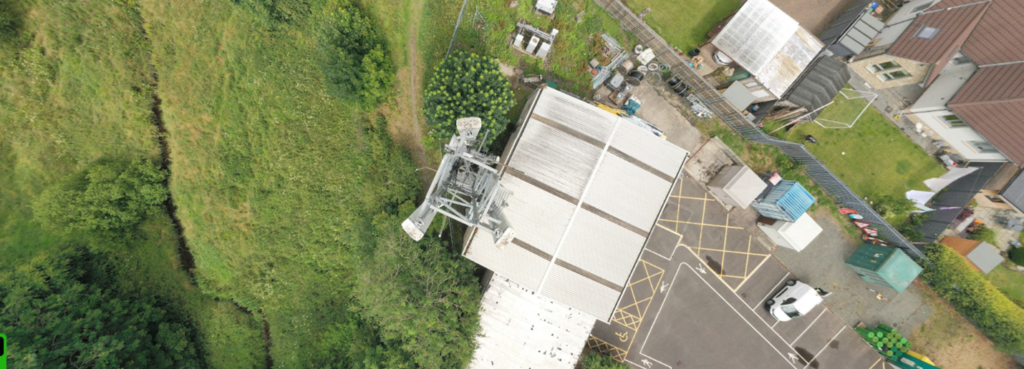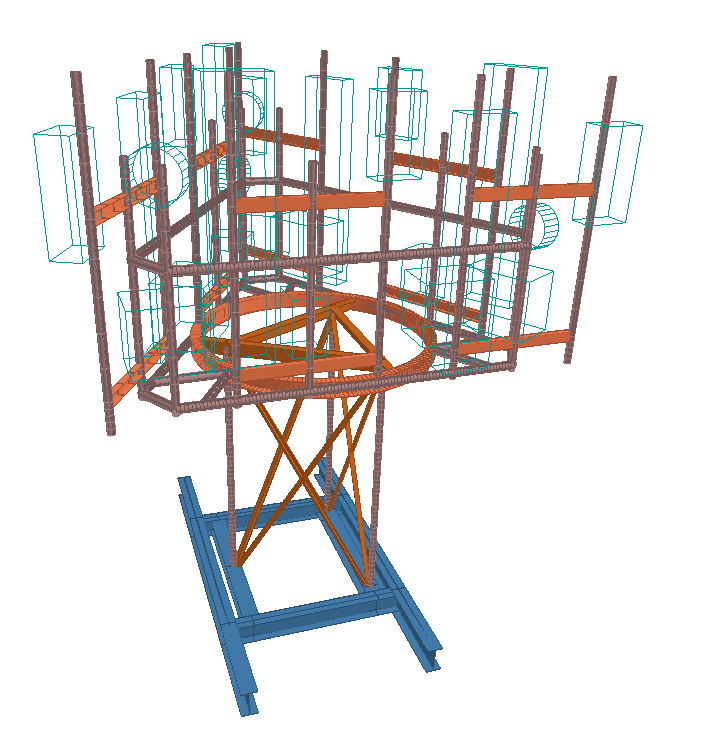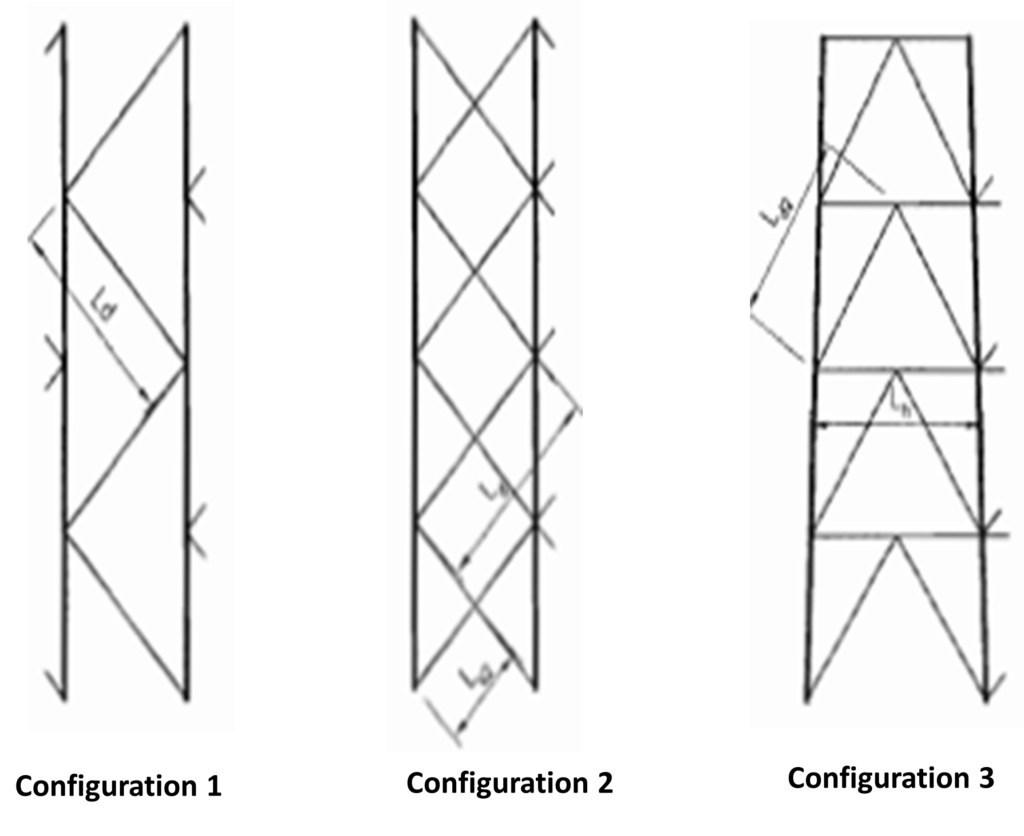Failure modes of anchor fasteners refer to the different ways in which fasteners can fail when used in concrete structures. These modes can be categorised as failure of anchor (steel) or the parent material (concrete). These can also be categorized as tension, shear or combined failure, as shown in the attached image.
Here are some common failure modes:
- Bolt Tensile Failure: This occurs when the tensile strength of the bolt is exceeded, causing it to break or fracture under tension.
- Concrete Cone Failure: This occurs when the concrete surrounding an anchor fails, typically in a cone shape.
- Pullout Failure: In this mode, the fastener is pulled out of the concrete due to the tensile forces when the bond between the fastener and the concrete is not strong enough.
- Concrete Splitting: This occurs when the concrete itself splits or cracks due to the applied forces, causing the fastener to lose its grip or become ineffective.
- Steel Failure: This occurs when the fastener itself, typically made of steel, fails due to shear stress exceeding its strength. The fastener may fracture or deform, leading to loss of load-carrying capacity.
- Concrete Pryout: This occurs when the fastener pulls out or displaces the concrete around it. This failure mode is more likely to happen when the fastener is located near the edge of the concrete element.
- Concrete Breakout: This occurs when the concrete surrounding the fastener fails in shear. It occurs when the applied shear force causes the concrete to crack or break, resulting in the loss of anchorage.
- Combined Failure: This is a combination of shear and tensile failure. It happens when the bond between the fastener and the concrete is not strong enough to resist the applied shear force, causing the fastener to be pulled out of the concrete.
It is important to consider these failure modes when designing and installing fasteners in concrete structures to ensure their proper performance and safety. At KA Engineering Group, we leverage on our extensive experience to design and recommend most efficient fastening solutions for new as well as existing systems in telecom construction.
Contact our expert team at info@ka-engroup.com to learn more and discuss how we can best serve your needs.


